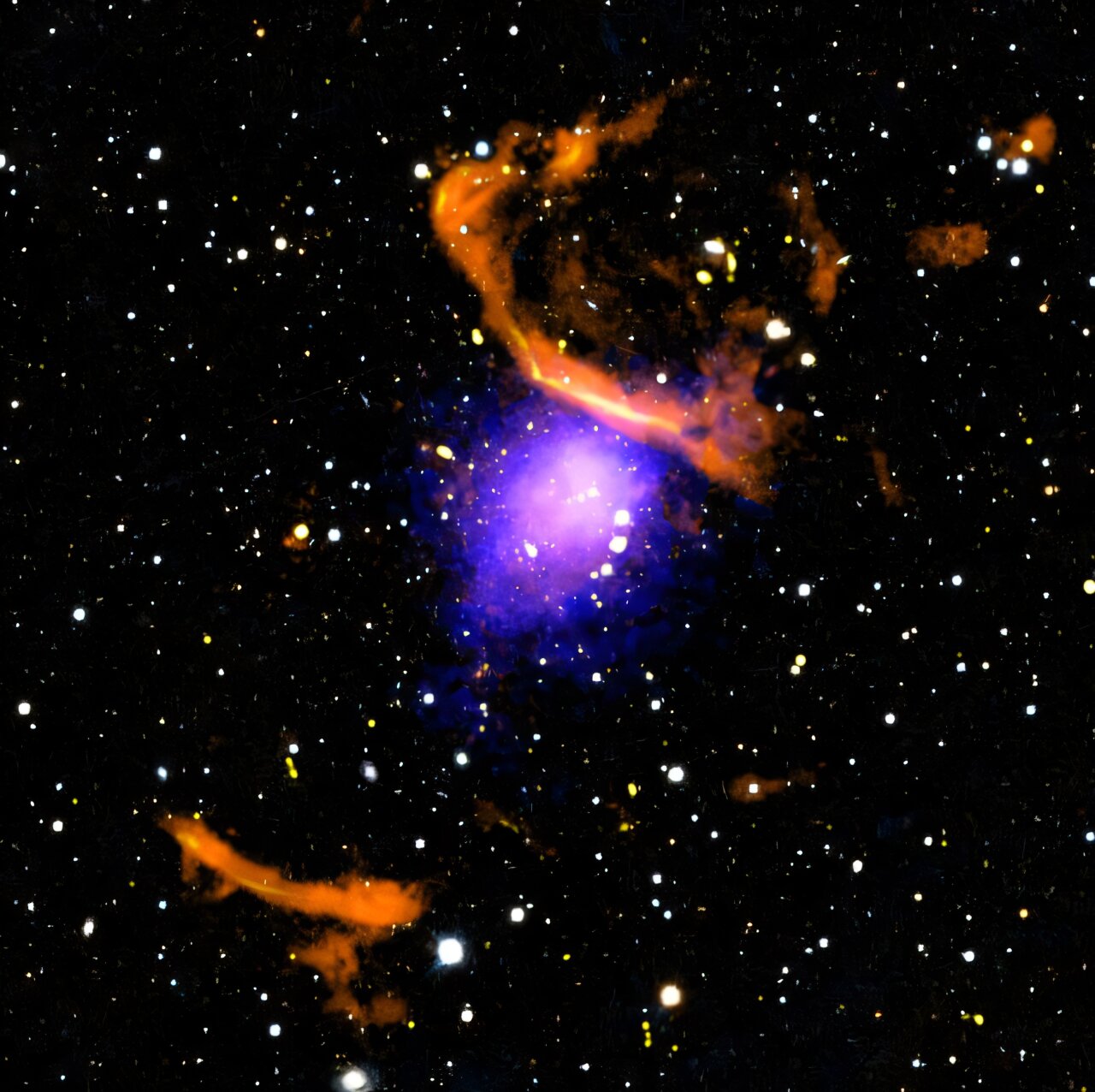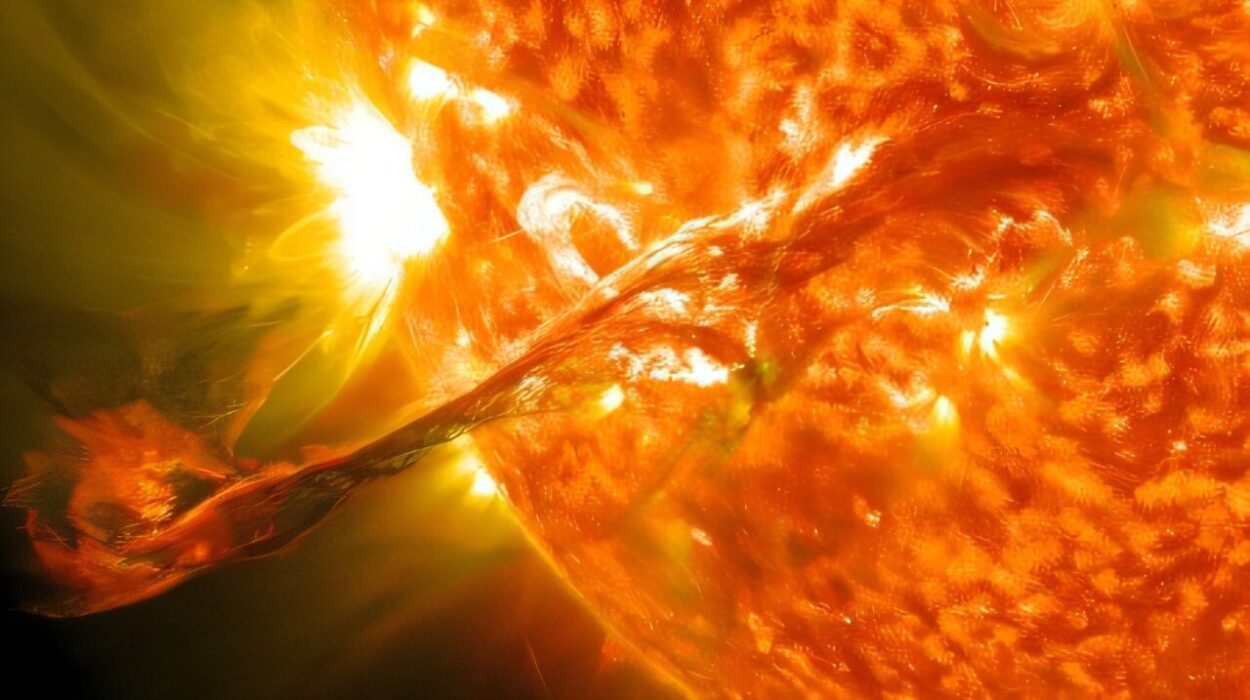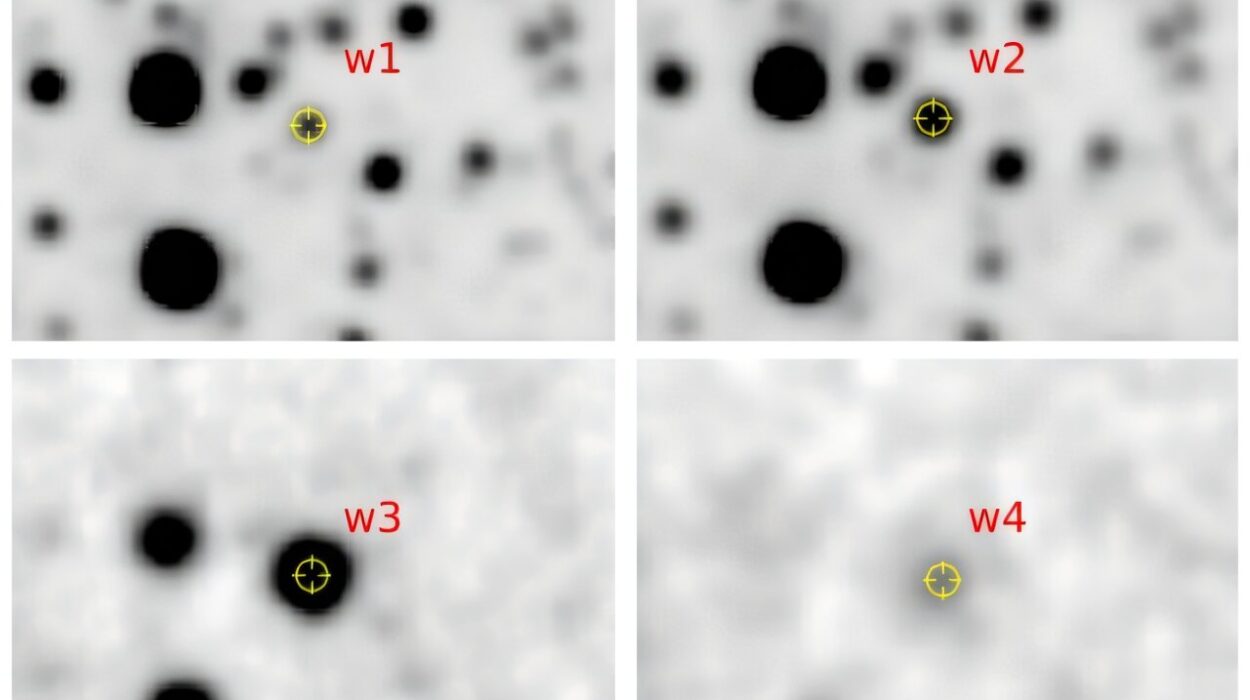In the vast expanse of space, where galaxies swirl and collide in a cosmic dance, astronomers have uncovered a discovery that challenges long-standing theories about how energy moves through the universe. A team of researchers at the Center for Astrophysics | Harvard & Smithsonian (CfA) has revealed the largest known cloud of energetic particles surrounding a galaxy cluster—an awe-inspiring structure spanning nearly 20 million light-years. This discovery, presented at the 246th meeting of the American Astronomical Society (AAS 2025), is set to rewrite the textbook understanding of cosmic energy, with profound implications for astrophysics.
The galaxy cluster in question, PLCK G287.0+32.9, is located a staggering 5 billion light-years from Earth. But this cloud of energetic particles, stretching across vast regions of space, is no ordinary cosmic phenomenon. The immense size of this structure, nearly 20 times the diameter of the Milky Way, is only the beginning of its mystery. It’s the way this vast expanse of particles stays energized that has left researchers in awe and scratching their heads.
A Surprising Revelation from the Heart of a Galaxy Cluster
Astronomers had been keeping a close eye on PLCK G287.0+32.9 since its discovery in 2011. Initial observations revealed two bright relics—massive shockwaves illuminating the edges of the cluster. These shockwaves were thought to be the source of the energetic particles that filled the space. But what scientists didn’t expect was what lay hidden in the quiet regions between those shockwaves.
Earlier studies had overlooked a faint but incredibly significant radio emission that now fills the entire cluster. New, high-resolution radio images have revealed that the galaxy cluster is not just home to two isolated shockwaves, but is instead surrounded by a massive cloud of energetic particles, glowing faintly in radio light.
Lead author Dr. Kamlesh Rajpurohit, an astronomer at CfA, expressed the surprise of the discovery: “We expected a bright pair of relics at the cluster’s edges, which would have matched prior observations, but instead we found the whole cluster glowing in radio light. A cloud of energetic particles this large has never been observed in this galaxy cluster or any other.”
This newly discovered radio halo stretches across an enormous region, defying previous predictions about the size and power of such structures. The previous record holder for the largest known cloud of energetic particles was the Abell 2255 galaxy cluster, which spanned about 16.3 million light-years. But PLCK G287.0+32.9 has far surpassed it, presenting an entirely new mystery for astrophysicists to untangle.
Unveiling the Mystery: How Do These Particles Stay Energized?
What makes this discovery even more intriguing is that it challenges a fundamental aspect of particle behavior in the cosmos. Previous theories suggested that particles in such large clouds should lose their energy over time, cooling and fading as they drift through space. This process, known as electron cooling, would typically cause the cloud to appear dimmer at higher frequencies. However, the new data shows that the radio halo at PLCK G287.0+32.9 remains bright even at higher frequencies—specifically, 2.4 GHz, a frequency where halos this large are typically not visible.
This revelation has prompted a paradigm shift. If particles in the cluster’s halo should have cooled over time, how is it that they are still so energetically active? The researchers suspect that something beyond the expected processes is re-energizing these electrons, perhaps through massive shockwaves or turbulence shaking the gas between galaxies.
“We’re seeing radio emission extending all the way between the giant shocks and beyond, filling the entire cluster,” said Dr. Rajpurohit. “That suggests something is actively accelerating, or re-accelerating the electrons, but none of the usual suspects apply.”
In simpler terms, the study’s findings imply that instead of simply drifting and cooling, the particles are being energized by forces that scientists don’t yet fully understand. The leading candidates? Giant shockwaves and turbulence sweeping through the hot gas that exists between galaxies in the cluster. But how these forces work to sustain such a vast cloud of energetic particles is still an open question.
Cosmic Rays, Magnetic Fields, and a New Way to Study the Universe
The discovery has far-reaching implications beyond simply understanding how energetic particles behave. One of the biggest unanswered questions in astrophysics is how magnetic fields influence the universe on the largest scales. The presence of cosmic rays and magnetic fields in the cluster’s radio halo offers astronomers a unique opportunity to study these forces in ways never before possible.
The cluster’s unusual structure, revealed by radio and X-ray observations, could provide a new window into the study of cosmic magnetic fields—vast, invisible forces that shape galaxies and clusters. These fields have been theorized to affect everything from the motion of charged particles to the formation of large-scale structures in the universe.
“This is a breakthrough in how we’re starting to see the universe,” said Dr. Rajpurohit. “We’re rethinking how energy and matter move through its largest structures. Magnetic fields have always been one of the most difficult aspects of the cosmos to study, and now, thanks to this discovery, we may have a new way to observe them in action.”
X-ray Features Hint at Even Larger Cosmic Forces at Work
Adding to the intrigue are observations made with NASA’s Chandra X-ray Observatory, operated by the Smithsonian Astrophysical Observatory. X-ray data has revealed a box-like structure, a comet-shaped tail, and other striking features within the cluster’s hot gas. These features suggest that the galaxy cluster is far from calm—turbulence and mergers between galaxy clusters seem to be at work.
Some of these X-ray features align with the radio-detected structures, reinforcing the idea that shockwaves and turbulence might be the driving forces behind the energetic particle cloud. In the cluster’s center, the X-ray data hints that a merger between two smaller galaxy clusters may be causing some of the shocks. Alternatively, the intense energy could be linked to outbursts from a supermassive black hole.
This discovery marks the first time that such massive and energetic processes have been observed in such detail. The combination of X-ray and radio data paints a picture of a galaxy cluster in turmoil, with multiple forces—some yet to be fully understood—at play in its complex structure.
A New Era of Cosmic Discovery
The discovery of the largest cloud of energetic particles ever observed raises as many questions as it answers, and for astronomers like Dr. Rajpurohit and his team, that’s just the beginning.
“This discovery is like finding a new chapter in a book we thought we already understood,” he explained. “The implications for our understanding of how galaxies and clusters evolve, how cosmic rays are accelerated, and how magnetic fields shape the universe are profound. We are entering an era where we may finally begin to answer some of the biggest questions about the cosmos.”
As scientists continue to analyze the data and refine their models, one thing is certain: the universe is far more dynamic and mysterious than we ever imagined. What began as an unexpected discovery in a distant galaxy cluster has now opened a new frontier of exploration—a frontier where the secrets of the universe’s largest structures may soon be within our grasp.
And as always in science, where one question is answered, a hundred more emerge. But in that process, we move one step closer to understanding the intricate, awe-inspiring forces that shape the cosmos.
Reference: K. Rajpurohit et al, Radial Profiles of Radio Halos in Massive Galaxy Clusters: Diffuse Giants Over 2 Mpc, arXiv (2025). DOI: 10.48550/arxiv.2505.05415






